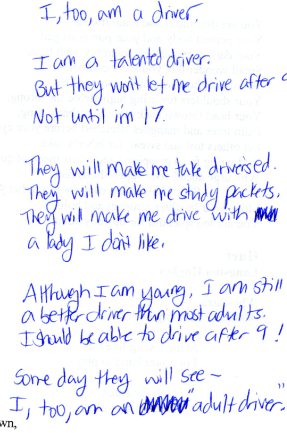
As a graduate of the Colgate teacher education program,
...I use appropriate assessments to guide instruction and develop a fluid and reflective relationship between assessment and instruction.
During my student teaching experience, I worked to ensure that I used assessments to guide my instruction to the benefit of my students. While I gave a number of quizzes, writing assignments and tests, I also used informal assessments and class participation to gauge the learning of my students. Below are some examples of the relationship that I have developed between assessment and instruction.
On Monday, February 11 I wrote in my journal:
On brief assessments that I had completed on Friday, several of the students indicated that they were still unsure about the differences between dependency and modernization theory. Therefore, I planned the lesson to review the theories, offer visual models, and pull data taken from the pictures into those models. Just looking at the faces of the students, I could see the light going on for some of them. After reviewing Wallerstein’s model (dependency) and Rostow’s stages (modernization), the students worked in pairs to use data from Friday’s exercise to explicate high-, medium- and low-income countries. They were able to successfully integrate terms from both theories into their descriptions as well.
During a week-long unit on the European Renaissance, I built a number of different assessments into my lessons. From reading quizzes with optional homework checks to an enrichment art-making experience, assessment techniques were varied. My favorite tool, though, was a game called "Is This Renaissance Art?" After briefly instructing students in characteristics of Renaissance art, I showed them different examples of both Renaissance and non-Renaissance art. In a loose discussion, students would have to label artwork and then describe why they made their choice. This lesson, in particular, was very successful at getting even the quietest students in the class to participate.
Click here to see the PowerPoint and lesson plans from this unit.
While teaching about the Harlem Renaissance and the rise of the KKK in the 1920s, I asked my students to write poetry about a form of oppression that they faced in their lives. They could choose to model their work after Harlem Renaissance poets, write free-form poetry or use another style that fit their message. Many students focused on oppression they faced as a result of age, although other works focus on gender, hair color or internal oppression. This example below is modeled on "I, too, Sing America" by Langston Hughes. Click on the poem to see other examples of student work.